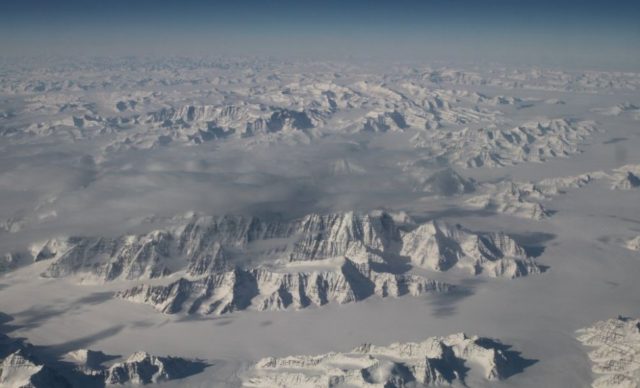April 1 (UPI) — At the end of the last ice age, rising temperatures and rapid ice loss triggered dramatic sea level rise.
Using geological records, scientists were able to detail the scale of the sea-level rise event, as well as pinpoint the ice sheets responsible for such rapid melt rates, publishing the findings Thursday in the journal Nature Communications.
Paleoclimate data suggests that over the course of 500 years, beginning around 14,600 years ago, Earth’s seas rose nearly 60 feet.
But until now, scientists weren’t sure which ice sheets were to blame for the event, dubbed Meltwater Pulse 1A, or MWP-1A.
Previous studies have implicated both the Antarctic Ice Sheet and ice sheets in the Northern Hemisphere.
Using detailed geologic data on local sea level rise levels, a technique called sea-level fingerprinting and state-of-the-art modeling methods, researchers were able to show that most of the meltwater responsible for MWP-1A flowed from North American and Eurasian ice sheets.
“Despite being identified over 30 years ago, it has been surprisingly challenging to determine which ice sheet was the major contributor to this dramatic rise in sea levels,” lead study author Yucheng Lin said in a press release.
“Previously, scientists tried to work out the source of the sea-level rise based on sea-level data from the tropics, but the majority of those studies disagreed with geological records of ice sheet change,” said Lin, an earth science and sea level rise expert at Durham University in Britain.
In addition to flooding coastal lowlands across the globe, the influx of freshwater from MWP-1A significantly disrupted global ocean circulation patterns and altered climate conditions.
The scientists’ sea-level fingerprinting efforts were bolstered by geologic data from lakes along the coast of Scotland — lakes that were isolated from the ocean as a result of land uplift following the retreat of the British Ice Sheet.
The Scottish data served as a control, helping scientists improve the temporal and spatial accuracy of sea-level rise data collected elsewhere.
“The technique we have used allows us to really dig into the error bars on the data and explore which ice-melt scenarios were most likely,” said study co-author Pippa Whitehouse.
“We found that most of the rapid sea-level rise was due to ice sheet melt across North America and Scandinavia, with a surprisingly small contribution from Antarctica,” said Whitehouse, a researcher in the geography department at Durham.
Researchers suggest a more accurate accounting of Meltwater Pulse 1A will help modelers understand the connections between Earth’s ice sheets, sea levels and climate patterns.
The scientists said they hope the findings will also help climate scientists better understand the impacts of meltwater on ocean circulation and climate patterns.
“The next big question is to work out what triggered the ice melt, and what impact the massive influx of meltwater had on ocean currents in the North Atlantic,” Whitehouse said.
“This is very much on our minds today — any disruption to the Gulf Stream, for example due to melting of the Greenland Ice Sheet, will have significant consequences for the [British] climate.”

COMMENTS
Please let us know if you're having issues with commenting.